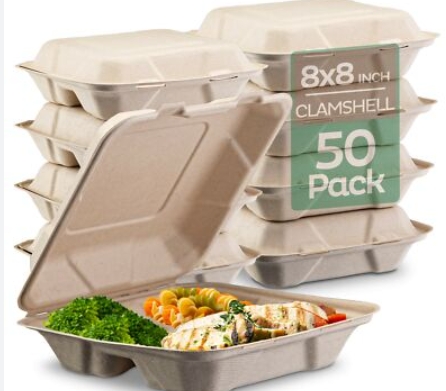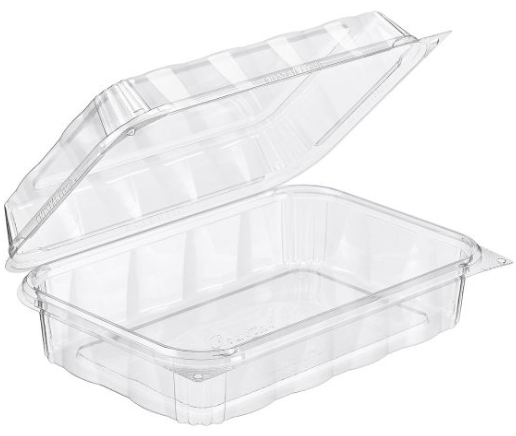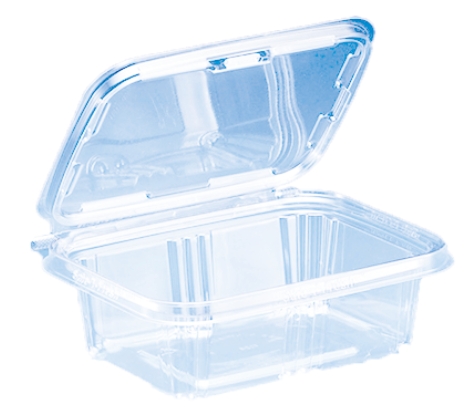
Content Menu
● What is Clamshell Box Packaging?
>> Structure and Characteristics
● What is Traditional Packaging?
>> An Overview of Conventional Formats
● Major Differences Between Clamshell and Traditional Packaging
>> 1. Product Protection
>> 2. Product Visibility
>> 3. Ease of Access
>> 4. Environmental Impact
>> 5. Cost Efficiency
>> 6. Branding and Customization
● Common Applications
>> Where Clamshell Packaging Works Best
>> Where Traditional Packaging Prevails
● Advantages and Disadvantages
>> Clamshell Packaging
>> Traditional Packaging
● How to Choose the Best Packaging for Your Product
● The Future of Packaging
● Conclusion
● FAQ
>> 1. What products are best suited for clamshell packaging?
>> 2. Is traditional packaging more sustainable than clamshell packaging?
>> 3. How can I make clamshell packaging easier to open?
>> 4. Can traditional packaging be used for high-value items?
>> 5. Which packaging type offers better branding opportunities?
Packaging goes far beyond simply containing a product. It serves crucial functions including protection, marketing, transportation, and even influencing customer perception. In today's marketplace, businesses face a growing number of packaging options, each with specific advantages and limitations. Among the most notable are clamshell boxes and traditional packaging methods.
Both packaging types are widely used across many industries and product categories, but they differ significantly in materials, usability, sustainability, and appearance. This comprehensive guide will explore both packaging options, outline their key differences, and help businesses and consumers alike make informed choices. Whether you're a manufacturer, a seller, or a discerning consumer, understanding these packaging approaches can elevate your decisions.

What is Clamshell Box Packaging?
Structure and Characteristics
Clamshell packaging, as the name suggests, mimics the shape and function of a clam. It features two connected halves that close together on a hinged seam, forming a single container. This packaging is often constructed using transparent plastic or rigid cardboard, offering both durability and clear product display.
Key features of clamshell boxes include:
- Integrated Hinge Design: Allows repeated opening and closing without separation.
- Secure Closure: Many come with interlocking tabs or heat-seal options for tamper resistance.
- Transparent Display: Often used to showcase the product without needing to open the package.
- Rigid Protection: Offers substantial defense against damage, dust, and moisture.
Clamshell boxes are especially common in settings where the product needs to be seen, protected, and preserved before purchase.
What is Traditional Packaging?
An Overview of Conventional Formats
Traditional packaging is a broad umbrella that covers formats such as cardboard boxes, blister packs, paperboard cartons, shrink wraps, and flexible bags. These timeless methods are favored due to their simplicity, diverse applications, and lower production costs.
Common types include:
- Cardboard Boxes: Widely used for shipping, storage, and retail display. Known for their strength and recyclability.
- Paperboard Cartons: Lightweight and often used in cosmetics, pharmaceuticals, and food products.
- Shrink Wraps and Plastic Bags: Useful for bundling or containing irregularly shaped items.
- Pouches and Wrappers: Often used in the food industry and for small consumer goods.
Each format under the traditional umbrella has a wide range of applications and levels of customizability, making traditional packaging extremely versatile.
Major Differences Between Clamshell and Traditional Packaging
1. Product Protection
Clamshell packaging generally offers superior protection due to its rigid design and enclosed structure. It safeguards products from external pressure, contamination, and water exposure. In contrast, traditional packaging such as cardboard or paperboard may require added inner padding to match the protective capabilities of a clamshell box.
2. Product Visibility
One of the key benefits of clamshell packaging is maximum product visibility. Store shelves often benefit from the clear plastic shell, allowing consumers to view the product directly. Traditional packaging, unless it features a cut-out window or transparent film, usually conceals the product and relies on graphics or descriptions.
3. Ease of Access
Traditional packaging typically excels in user-friendly access. Most boxes or pouches can be opened without the need for tools. In contrast, clamshell packaging is infamous for being frustrating to open—a phenomenon sometimes dubbed "wrap rage." Newer, improved clamshell designs are addressing this issue with easy-tear plastic and user-friendly seals.
4. Environmental Impact
Sustainability is a pressing concern for modern packaging decisions. Traditional options like cardboard and paperboard boxes are widely recyclable and biodegradable. Clamshell boxes, particularly those made of hard plastics, can be more challenging to recycle and are often discouraged by environmental advocates. However, innovations in using plant-based plastics and recycled materials are making clamshells more environmentally viable.
5. Cost Efficiency
Traditional packaging is generally more cost-effective. Papier-based options can be produced in larger quantities at lower prices. Clamshell packaging typically requires molded designs and tougher materials, increasing production and material costs. For businesses focusing on budget constraints, traditional options often offer better price efficiency.
6. Branding and Customization
Both clamshell and traditional packaging allow for customization, but in different ways. Traditional packaging provides a larger canvas for branding, with ample space for logos, marketing messages, and vibrant designs. Clamshells offer product visibility as part of the branding experience but may have limited surface space for printed visuals.
Common Applications
Where Clamshell Packaging Works Best
Clamshell boxes are highly favored in retail environments where theft prevention, visibility, and product engagement are important. They're commonly used for:
- Electronic gadgets and accessories
- Hardware tools and components
- Retail collectibles and action figures
- Food items like salads and bakery products
- Medical devices and sterile consumables
Where Traditional Packaging Prevails
Traditional packaging dominates in broader industry use due to its adaptability. It's ideal for:
- E-commerce and bulk shipping
- Apparel and textiles
- Books, stationary, and office supplies
- Beauty and cosmetic products
- Household pantry goods

Advantages and Disadvantages
Clamshell Packaging
Advantages:
- Provides excellent product protection
- Secures against tampering
- Displays product effectively
- Durable and sometimes reusable
Disadvantages:
- Often difficult to open
- Typically less environmentally friendly
- More expensive to manufacture
- Limited branding space compared to boxes
Traditional Packaging
Advantages:
- Flexible and easy to customize
- Widely recyclable and biodegradable
- Cost-efficient across high volumes
- Simple and lightweight
Disadvantages:
- May lack tamper-resistance
- May not offer adequate protection without inserts
- Less effective at product display
- Sometimes susceptible to moisture damage
How to Choose the Best Packaging for Your Product
When deciding between clamshell and traditional packaging, several factors need to be evaluated:
1. Target Market Preferences: Visual appeal and ease of use can influence buying decisions.
2. Sustainability Goals: Environmentally responsible practices can guide the material choice.
3. Budget Constraints: Assess the long-term benefits versus upfront production costs.
4. Product Type and Fragility: Choose packaging that suits the strength and shape of the product.
5. Retail Environment Needs: Whether your product sits on a shelf, ships in bulk, or is bought online affects the best format.
Some businesses even opt for hybrid approaches—combining protective plastic elements with recyclable paper backings or adding transparent windows to boxes for visibility.
The Future of Packaging
As environmental concerns and customer expectations evolve, so too does the future of packaging design. Many companies are experimenting with biodegradable plastics, compostable liners, and smart packaging technologies to provide more sustainable and informative solutions. Expectations around packaging have expanded beyond product protection—the unboxing experience, recyclability, and even QR code integration are becoming essential components.
Clamshell packaging is also undergoing changes to reduce plastic content and use more renewable resources. Traditional packaging sees continual innovation in printing techniques, design, and material optimization.
Conclusion
Clamshell and traditional packaging each offer unique strengths, tailored to different market needs. Clamshell packaging provides superior security and product visibility, making it perfect for items that must attract attention on the shelf. Traditional packaging offers versatility, simplicity, and eco-conscious benefits, making it well-suited for a broader range of industries.
Ultimately, the right choice depends on product characteristics, brand image, cost goals, and sustainability targets. Whether you're launching a new product or optimizing your current supply chain, thoughtful packaging selection is essential for both operational success and consumer satisfaction.

FAQ
1. What products are best suited for clamshell packaging?
Clamshell packaging works well for small electronics, retail tools, toys, and perishable food products where protection and visibility are essential.
2. Is traditional packaging more sustainable than clamshell packaging?
In many cases, yes. Traditional packaging made from cardboard or paper is easier to recycle and more biodegradable. That said, some clamshells now feature eco-friendly materials aimed at improving sustainability.
3. How can I make clamshell packaging easier to open?
Consider using soft-seal designs, adding perforations, or using recyclable molded pulp materials that are easier to manipulate than traditional hard plastics.
4. Can traditional packaging be used for high-value items?
Yes, but it may require internal padding like foam inserts or air cushions to provide the same level of protection that clamshell packaging inherently offers.
5. Which packaging type offers better branding opportunities?
Traditional packaging usually provides more space for logos, text, and design. However, clamshells facilitate branding through visual exposure of the actual product.

















